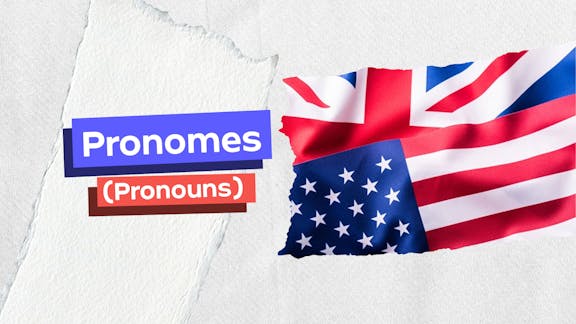“Thus” (L52) introduces a/an:
Science Education in the United States of America
(Audrey B. Champagne.)
Science education in the United States of America is in the
midst of an unprecedented reform movement-unprecedented
because the movement is driven by national standards
developed with support from the federal government. The
standards for science education are redefining the character of
science education from kindergarten to the postgraduate
education of scientists and science teachers. Unlike the
education in most countries of the world, education of
students in kindergarten through grade twelve in the United
States is not the responsibility of the federal government but
is controlled by the individual states. States have the right to regulate all elements of the curriculum-the content all
students are expected to learn, the structural organization
of programs across all grades, the structural organization of
the yearly curriculum in each subject, teaching methods, and
textbooks. Historically, and even now, the states jealously
guard all their rights and resist efforts by the federal
government to exercise control over matters that are the
responsibility of the states. The federal government's
involvement in education has been to identify matters of
national priority and to provide funds and other resources
to the states to meet the national priorities. So, for instance,
in the late 1960s and early 1970s, when the United States
felt that its perceived preeminence in scientific research and
its national safety were threatened, science education was
identified as a national priority. The primary purpose of the
federal government's initiatives was to encourage and
upgrade the science education of young people who would
become practicing scientists. This effort was not perceived
by the states as an erosion of their rights because it was a
response to a threat to the nation and was targeted on the
science education of a relatively few students. The current
situation is quite different.
The federal government's underwriting of the
development of national standards for education has the
potential for shifting the control of the curriculum from the
states to the federal government. This initiative, supported
by the National Association of Governors, is the result of the
concern of political, business and industrial leaders with the
poor quality of education across the nation and with the
effect this poor quality has on the U.S. position in the world
economy. The goal of the standards movement from the
prospective of political, business, and industrial leaders is to
strengthen education so that the schools will produce
graduates with the knowledge and skills required of them to
be productive in the workplace.
The pedagogy and attitudes of many teachers and
professors alike has been that science is for the few. So little
concern or effort was applied to make science interesting or
to make learning it easy. Consequently, only highly
motivated and highly intelligent students survived science
courses. Thus it appears education in the natural sciences
develops individuals who reason well, are critical thinkers,
are creative problem solvers-in short, are intelligent. But, we
must ask, does education in the natural sciences produce
smarter people or do smart people survive science as it is
taught? While historically the answer to the question may
well have been survival, the national standards are based on
the beliefs that science is for all and can produce smarter
people.
(Available: https://files.eric.ed.gov/fulltext/EJ608194.pdf. Adapted.)
Gabarito comentado
Resposta correta: Alternativa C — Logical consequence
Tema central: palavras conectivas (connective words). A questão exige reconhecer a função discursiva de “Thus” em inglês — ou seja, que tipo de relação lógica ela estabelece entre frases.
Resumo teórico rápido: Conectivos organizam a coesão e a coerência do texto. Principais funções: adição, contraste, mudança de assunto, estruturação e consequência/resultado. Palavras como thus, therefore, consequently indicam consequência lógica (causa → efeito) — ver Halliday & Hasan (1976) sobre coesão; dicionários como Cambridge/Oxford definem thus como “as a result”.
Justificativa da alternativa correta (C): No trecho indicado, “Thus” está introduzindo um efeito/resultante do que foi afirmado antes. Ou seja, ele liga uma premissa à conclusão: depois de descrever que apenas alunos muito motivados sobreviviam aos cursos de ciência, vem a conclusão sobre se a educação torna as pessoas mais inteligentes ou apenas seleciona as inteligentes. Logo, “Thus” marca consequência lógica.
Análise das alternativas incorretas:
A — Issue similarity: Errada. “Thus” não compara ou sinaliza semelhança; conectivos de similaridade seriam similarly, likewise.
B — Change of subject: Errada. Mudança de assunto costuma vir com marcadores como as for, regarding, on the other hand. “Thus” não introduz tópico novo.
D — Adding and structuring: Errada. Adição/estruturação é indicada por and, furthermore, moreover, in addition. “Thus” não soma informações, mas conclui-as.
E — Important contradiction: Errada. Contraste/contradição usa however, nevertheless, on the contrary. “Thus” aponta consequência, não oposição.
Estratégia prática para provas: Ao encontrar conectivos, pergunte: “isso mostra soma, contraste, mudança de tópico ou resultado?” Substitua mentalmente por sinônimos: se “thus” = “therefore/consequently/as a result”, escolha consequência.
Fontes rápidas: Halliday & Hasan, Cohesion in English (1976); Cambridge Dictionary — entry “thus”.
Gostou do comentário? Deixe sua avaliação aqui embaixo!






